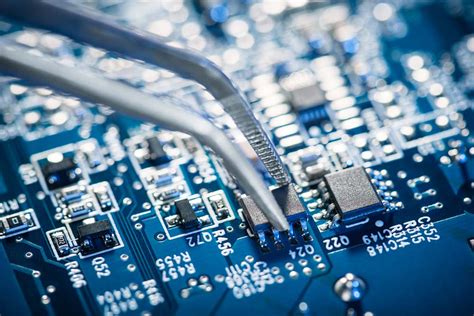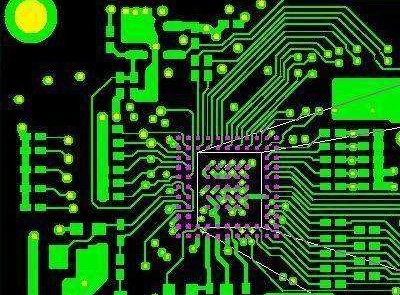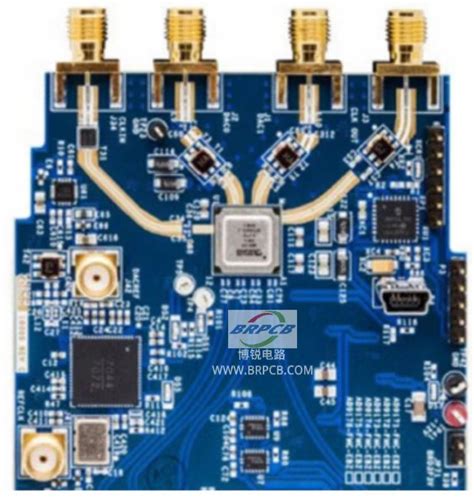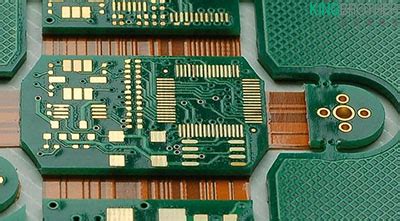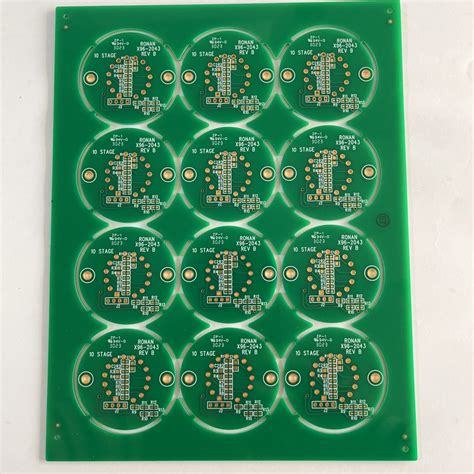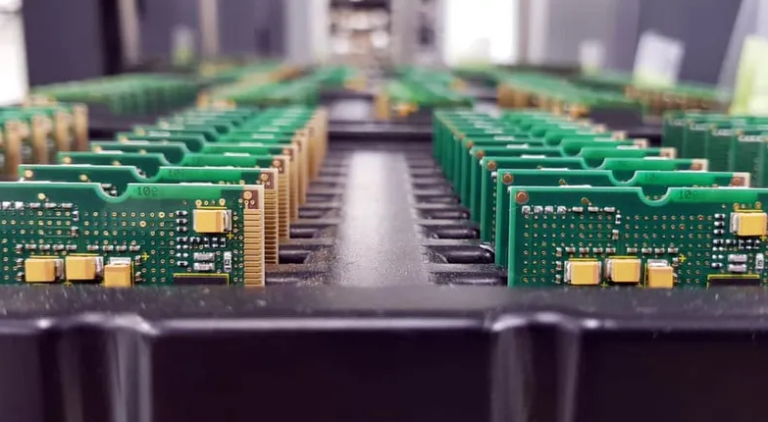Unlocking Innovation: The Art of Assembling PCB Components
Key Takeaways
Understanding the fundamentals of PCB assembly is crucial for anyone looking to enhance their skills in electronic design projects. Assembling PCB components, often referred to in the industry as PCBA, involves more than just placing parts onto a board; it encapsulates a comprehensive process that requires careful attention to detail and an adept understanding of best practices. Knowledge of the essential tools is paramount, as they can significantly impact the efficiency and effectiveness of your assembly process. Emphasizing methods for proper component placement ensures that your assembly meets both functional and structural requirements, reducing errors and increasing reliability.
As you delve deeper into PCB assembly, appreciating common challenges, such as misalignment and solder issues, is essential. Employing advanced techniques can also improve precision, which is particularly important for high-density boards. Finally, implementing rigorous quality control measures ensures that your assembled boards perform optimally over time, adhering to industry standards. Keeping an eye on future trends will allow innovators to stay ahead of the curve and integrate new advancements into their projects seamlessly. By focusing on these key areas, you can significantly elevate your proficiency in PCB component assembly.
Introduction to PCB Component Assembly
The process of PCB assembly, often referred to as PCBA, is a meticulous journey that transforms a schematic design into a fully functional electronic device. At its core, this art involves precisely fitting various components onto a printed circuit board (PCB) to create complex electronic circuits. From resistors and capacitors to microcontrollers, each component plays a critical role, making the understanding of their specifications essential for any designer.
The assembly process can significantly impact the performance and reliability of the final product. Thus, employing efficient techniques and using advanced machinery can streamline workflows and enhance accuracy. Innovations in tooling and equipment, such as automated pick-and-place machines, have revolutionized how PCB assembly is conducted, reducing human error and increasing the repeatability of placements.
To illustrate the assembly process better, let’s consider the following table that outlines key components typically used in PCBA:
| Component Type | Function | Common Values/Specifications |
|---|---|---|
| Resistors | Limit current flow | Ohmic values from 1Ω to MegaΩ |
| Capacitors | Store electrical energy | Capacitance values from pF to µF |
| Inductors | Store magnetic energy | Inductance values in µH or mH |
| Integrated Circuits | Perform various functions | Logic families or operational amplifiers |
“Understanding each component’s specifications is crucial for achieving optimal electronic design performance.”
As designers become more familiar with these aspects of PCBA, they will find themselves better equipped to troubleshoot issues that arise during assembly or operation. This foundation sets the stage for advanced techniques that foster innovation in electronic design projects.
Essential Tools for Efficient PCB Assembly
To achieve optimal pcb assembly, equipping yourself with the right tools is paramount. The foundation of any successful Printed Circuit Board Assembly (PCBA) lies in a robust toolkit that simplifies processes and enhances precision. Firstly, a high-quality soldering iron is crucial; it allows for efficient connections between components and the board while ensuring minimal thermal damage. Complementing this, a good pair of tweezers can facilitate the handling of small parts, ensuring careful placement and reducing the risk of damaging delicate components. Furthermore, using a reflow oven or solder paste printer can substantially improve efficiency in mass production settings, as they promote uniform solder application necessary for reliable performance.
In addition to these basic tools, adopting automation where possible can significantly streamline your workflow. Pick-and-place machines automate the placement of components, greatly reducing labor times and increasing consistency across assemblies. Additionally, utilizing a microscope during assembly can help inspect connections more closely, ensuring that every joint meets quality standards before moving on to testing.
Finally, don’t overlook the importance of organizational tools such as component trays and labels. Keeping components organized not only speeds up assembly time but also minimizes errors related to misplacement of parts. By investing in these essential tools for your pcb assembly process, you can pave the way for more effective and accurate electronic design projects while preventing common pitfalls encountered in PCBA work.
Step-by-Step Guide to Assembling PCB Components
Assembling PCB components involves a methodical approach that ensures both efficiency and accuracy. The first step begins with a thorough understanding of the pcb assembly process, which encompasses both through-hole and surface mount technology. Begin by preparing your workspace with all necessary components and tools, as this will streamline the workflow. Next, create a clear layout based on the design schematics; this helps to mitigate errors during placement. When placing components, use solder paste to assist in adhering them before soldering; this is particularly vital in PCBA projects where precision is critical.
Once all components are positioned correctly, the soldering process can commence—whether manually with a soldering iron or through a reflow oven for larger batches. It’s essential to monitor soldering temperatures carefully to avoid damage. After soldering, inspecting each joint for quality assurance can prevent future complications in device performance. Engaging in practices such as thermal cycling can also aid in identifying any weak connections early on. Finally, documenting every stage of your assembly will contribute to improved techniques in future pcb assembly projects and enhance overall understanding of component behaviors within different environments.
Common Challenges in PCB Assembly and Solutions
In the realm of PCB assembly, various challenges can arise that may hinder the efficiency and quality of the final product. One common issue is component misalignment during the assembly process, which can lead to functionality problems in the finished PCBA. This misalignment often occurs due to inadequate placement techniques or lack of precision in component handling. To address these issues, utilizing high-quality alignment tools and fixtures is essential. Another challenge is soldering defects, such as cold solder joints or bridging, which can compromise electrical connections. Implementing stringent quality control checks at various stages of the process can significantly reduce these defects. Additionally, managing a broad array of components—often with varying specifications—can complicate inventory management. Leveraging inventory management software designed for PCB assembly can help streamline procurement and organization of components. Moreover, environmental factors like humidity and temperature fluctuations during assembly can also impact solder joint quality, necessitating a controlled environment for optimal results. By understanding these challenges and employing targeted solutions, manufacturers can enhance their overall PCBA processes, leading to higher reliability and performance in electronic designs.
Best Practices for Managing Component Placement
Effective management of component placement is crucial in PCB assembly to ensure that the final product performs reliably and meets design specifications. Precise placement of components not only affects the functionality of the board but also influences manufacturing efficiency and costs. One essential practice is to utilize specialized placement tools that aid in positioning components exactly where they are needed. These tools can range from manual alignment devices to automated pick-and-place machines that significantly enhance accuracy and speed during the PCBA process.
Another best practice involves thorough planning before assembly begins. Designers should create a detailed layout, clearly defining each component’s location according to its functionality and orientation. This strategic layout reduces potential errors during assembly and simplifies subsequent processes, such as soldering.
Moreover, it’s essential to consider the component’s lead length and height in relation to adjacent components. Keeping components at appropriate distances can prevent interference and promote better thermal management during operation. Additionally, using design software that includes DRC (Design Rule Checking) capabilities can further minimize placement issues, ensuring compliance with tolerances that mitigate risks of shorts or connectivity problems.
Lastly, implementing regular feedback loops between design teams and production staff ensures continuous improvement in managing component placement. By analyzing data from previous assemblies, teams can identify patterns or common pitfalls that may arise during PCB assembly, adapting their techniques accordingly for future projects. This collaborative approach not only enhances the overall quality of the printed circuit board but also fosters innovation within the field of electronic design.
Advanced Techniques for Precision Assembly
Achieving accuracy in pcb assembly demands a robust understanding of both the techniques and the tools employed. One advanced approach is the use of automated pick-and-place machines, which can significantly enhance precision when placing components on the board. These machines utilize sophisticated vision systems to ensure that each component is positioned exactly where it needs to be, minimizing the risk of error and increasing overall efficiency in pcba processes. Additionally, thermal profiling plays a vital role in ensuring that solder joints are consistently reliable, especially when working with various materials. By precisely controlling the temperature during soldering, you can avoid issues such as cold solder joints or thermal damage to sensitive components. Employing these advanced techniques not only improves the accuracy of your pcb assembly, but also contributes to a higher quality end product, making it essential for engineers and technicians striving for excellence in electronic design projects. Adopting such methods creates a framework where precision is not only desired but effectively achieved through careful planning and execution.
Quality Control Measures in PCB Production
Ensuring top-notch quality in PCB assembly is paramount for the longevity and functionality of electronic devices. Effective quality control measures throughout the production process can significantly minimize defects and enhance the reliability of the final product. Key strategies include rigorous inspection at each stage of PCBA development, from component selection to final assembly. Employing automated optical inspection (AOI) systems allows for real-time monitoring and detection of issues such as misaligned components or soldering defects. Additionally, utilizing process control techniques, such as Statistical Process Control (SPC), can help identify variations that could potentially lead to failures in the final product. Furthermore, conducting thorough testing procedures—both functional and environmental—ensures that each PCB assembly meets predetermined standards before reaching consumers. This comprehensive approach not only boosts production efficiency but also fosters confidence in the reliability of assembled PCBA, setting a strong foundation for innovation and customer satisfaction in electronic design projects.
Future Trends in PCB Component Assembly
As technology continues to evolve, the field of PCB assembly is witnessing remarkable transformations. One of the significant trends shaping the future is the rise of automation and robotics, which enhances efficiency and precision in PCBA processes. Automated systems can streamline repetitive tasks, allowing engineers to focus on complex aspects of design and assembly. Additionally, the integration of artificial intelligence and machine learning is providing new avenues for predictive maintenance and quality control, ensuring that potential issues are addressed before they escalate into significant problems.
Furthermore, an increasing emphasis on sustainability is leading to the development of eco-friendly materials and processes in PCB assembly. Designers are exploring alternatives such as biodegradable substrates that minimize environmental impact without compromising performance. The focus on miniaturization also remains a critical trend; as devices become smaller yet more powerful, there is a growing demand for innovative assembly techniques that allow for efficient use of space while maintaining a high standard of operational integrity.
Lastly, advancements in 3D printing technology are revolutionizing the prototyping phase of PCBA by enabling rapid production and iteration. This flexibility not only speeds up development cycles but also encourages experimentation with unconventional designs. Overall, these trends not only highlight the dynamic nature of PCB component assembly but also reflect a broader shift towards efficiency, sustainability, and innovation in electronic design projects.
Conclusion
In summary, mastering PCB assembly is essential for anyone looking to innovate in the field of electronics. The PCBA process is not merely about joining components; it embodies a meticulous methodology that ensures functionality, reliability, and durability of electronic products. As we have discussed throughout the article, leveraging the right tools and adhering to best practices can significantly enhance the efficiency of PCB assembly. Moreover, addressing common challenges with appropriate solutions fosters a smoother assembly experience. As advancements in technology continue to emerge, staying updated on cutting-edge techniques and quality control measures will be crucial. By applying these insights, engineers and designers can unlock new potentials in their electronic design projects, paving the way for future innovations in PCBA processes. Remember, a well-executed assembly not only contributes to better functioning devices but also lays down a foundation for creativity and exploration in electronic design.
FAQs
What is PCB assembly?
PCB assembly, often referred to as PCBA, is the process of soldering electronic components onto a printed circuit board (PCB) to create a functional electronic device. This includes placing and connecting components such as resistors, capacitors, and integrated circuits.
What tools are essential for efficient PCB assembly?
Essential tools for PCB assembly include soldering irons, tweezers, flux pens, and magnifying lamps. Advanced tools like pick-and-place machines and reflow ovens can greatly enhance the efficiency of the assembly process.
How can I ensure my components are properly placed on the PCB?
To ensure proper component placement on the PCB, it’s important to follow a detailed layout provided in your design files. Using Mil-spec tape or guides can help maintain precise alignment during placement.
What common challenges occur during PCB assembly?
Common challenges include misalignment of components, insufficient solder, and thermal stress during soldering. Implementing proper quality control measures can help mitigate these issues.
Are there advanced techniques for precision in PCB assembly?
Yes, advanced techniques such as automated optical inspection (AOI) and machine learning algorithms can help in achieving higher precision during PCBA. Additionally, using IPC standards ensures a consistent level of quality throughout the process.
For anyone seeking to enhance their knowledge and practical skills in pcb assembly, I encourage you to explore more resources. For detailed information on techniques and best practices, please click here.

